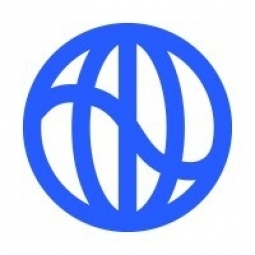Technology Category
- Cybersecurity & Privacy - Identity & Authentication Management
Applicable Industries
- Buildings
- Cement
Use Cases
- Building Automation & Control
- Time Sensitive Networking
About The Customer
Kroll is a leading independent provider of risk and financial advisory solutions. Founded in 1932, the company has grown to employ 6,500 people across 85 offices in 35 countries. Kroll leverages unique insights, data, and technology to help clients stay ahead of complex demands. The company is focused on identifying risks in businesses and providing solutions to mitigate them. As part of its commitment to sustainability, Kroll is building a climate program and is keen on improving its environmental, social, and governance (ESG) credentials.
The Challenge
Kroll, a leading provider of risk and financial advisory solutions, was facing challenges in managing its environmental, social, and governance (ESG) credentials. The company was using a spreadsheet-based approach for its climate program, which was proving to be cumbersome and inefficient. The spreadsheet method was not sophisticated or secure enough to support the carbon footprint measurement of a growing, global organization like Kroll. Additionally, the company was struggling with ESG reporting, which was time-consuming and felt like a full-time job. Keeping up with the ever-changing regulatory landscape was essential for Kroll to remain compliant and avoid risk, but it was also a time-intensive task. The company needed a more efficient and effective solution to support its ESG initiatives.
The Solution
Kroll turned to Watershed, a software solution, to overcome its challenges. The company implemented Watershed to calculate its 2022 carbon footprint, which proved to be an efficient and effective process. Watershed provided a roadmap for Kroll to understand where it could find the necessary data points for its footprint and reach out to the correct stakeholders. The software also served as a single source of truth, allowing colleagues to ensure that the right data was being submitted. Moreover, Watershed's SaaS platform allowed Kroll to have all of its historical and current data in a single source for simplified analysis and planning. For ESG reporting, Kroll used Watershed's Guided CDP report builder. This tool helped the company prepare a complete draft to present to its internal stakeholders efficiently, saving time and effort.
Operational Impact
Quantitative Benefit

Case Study missing?
Start adding your own!
Register with your work email and create a new case study profile for your business.
Related Case Studies.

Case Study
System 800xA at Indian Cement Plants
Chettinad Cement recognized that further efficiencies could be achieved in its cement manufacturing process. It looked to investing in comprehensive operational and control technologies to manage and derive productivity and energy efficiency gains from the assets on Line 2, their second plant in India.

Case Study
Energy Saving & Power Monitoring System
Recently a university in Taiwan was experiencing dramatic power usage increases due to its growing number of campus buildings and students. Aiming to analyze their power consumption and increase their power efficiency across 52 buildings, the university wanted to build a power management system utilizing web-based hardware and software. With these goals in mind, they contacted Advantech to help them develop their system and provide them with the means to save energy in the years to come.

Case Study
Intelligent Building Automation System and Energy Saving Solution
One of the most difficult problems facing the world is conserving energy in buildings. However, it is not easy to have a cost-effective solution to reduce energy usage in a building. One solution for saving energy is to implement an intelligent building automation system (BAS) which can be controlled according to its schedule. In Indonesia a large university with a five floor building and 22 classrooms wanted to save the amount of energy being used.

Case Study
Powering Smart Home Automation solutions with IoT for Energy conservation
Many industry leaders that offer Smart Energy Management products & solutions face challenges including:How to build a scalable platform that can automatically scale-up to on-board ‘n’ number of Smart home devicesData security, solution availability, and reliability are the other critical factors to deal withHow to create a robust common IoT platform that handles any kind of smart devicesHow to enable data management capabilities that would help in intelligent decision-making

Case Study
Protecting a Stadium from Hazardous Materials Using IoT2cell's Mobility Platform
There was a need for higher security at the AT&T Stadium during the NFL draft. There was a need to ensure that nuclear radiation material was not smuggled inside the stadium. Hazmat materials could often be missed in a standard checkpoint when gaining entry into a stadium.








